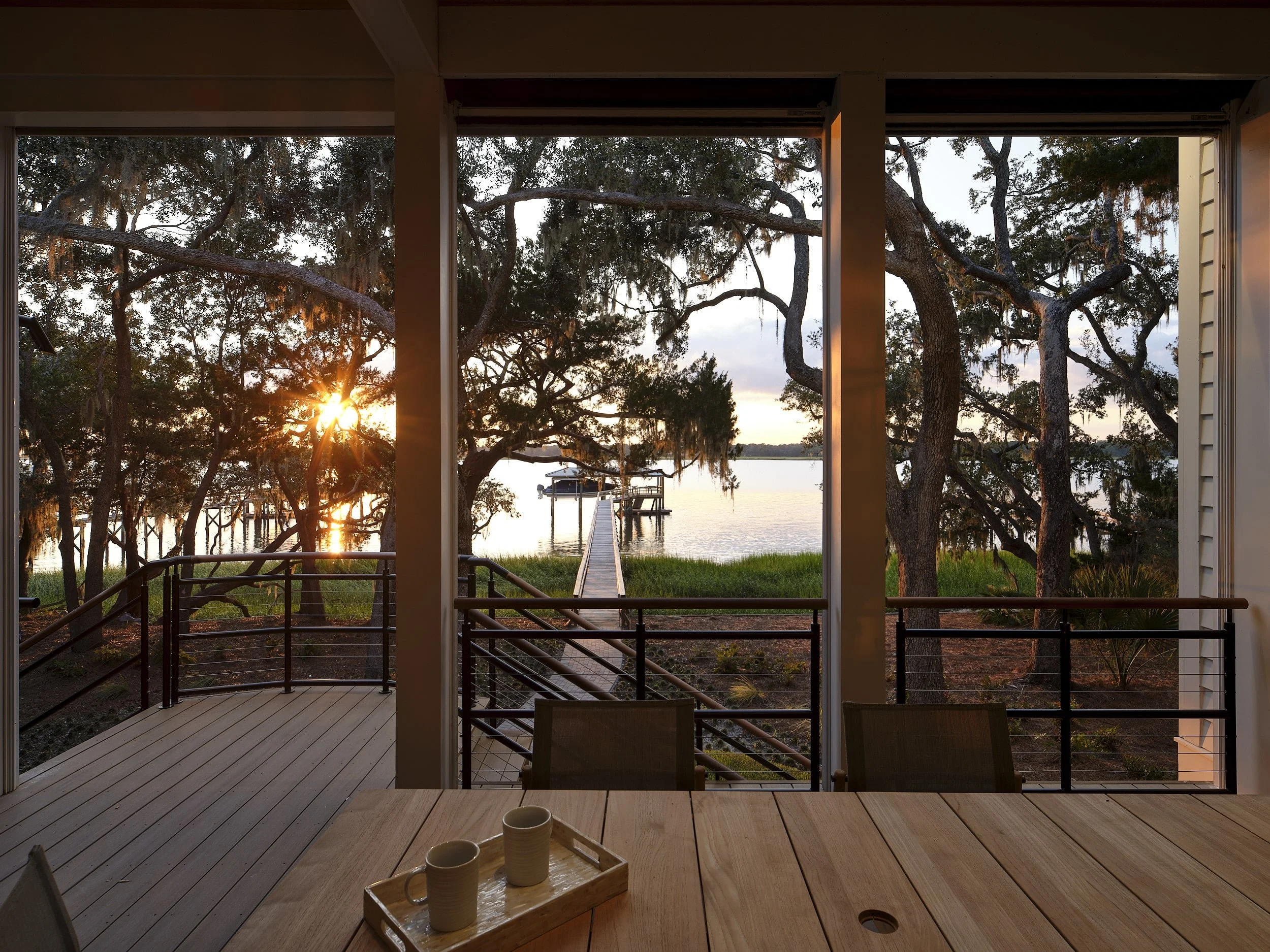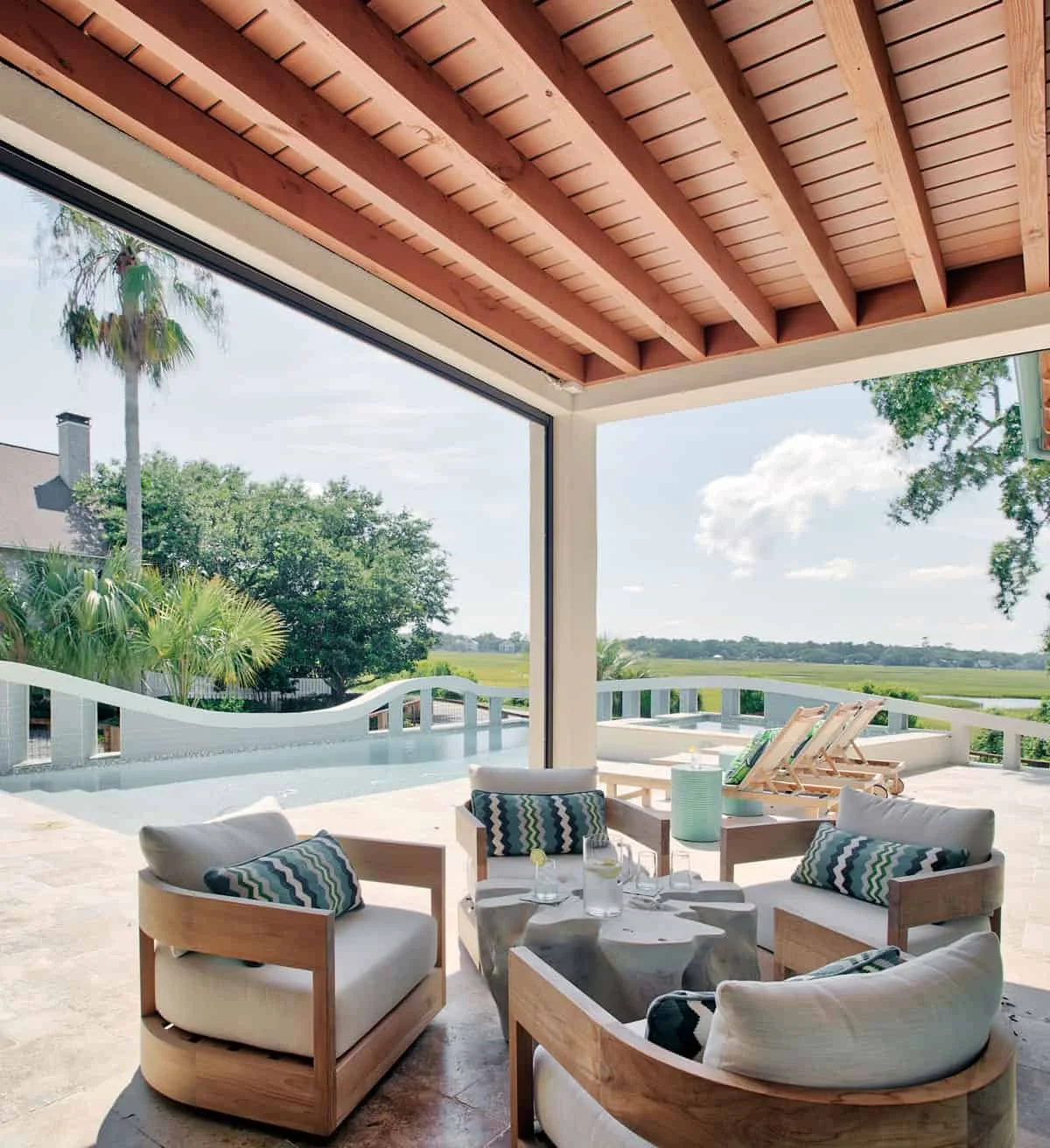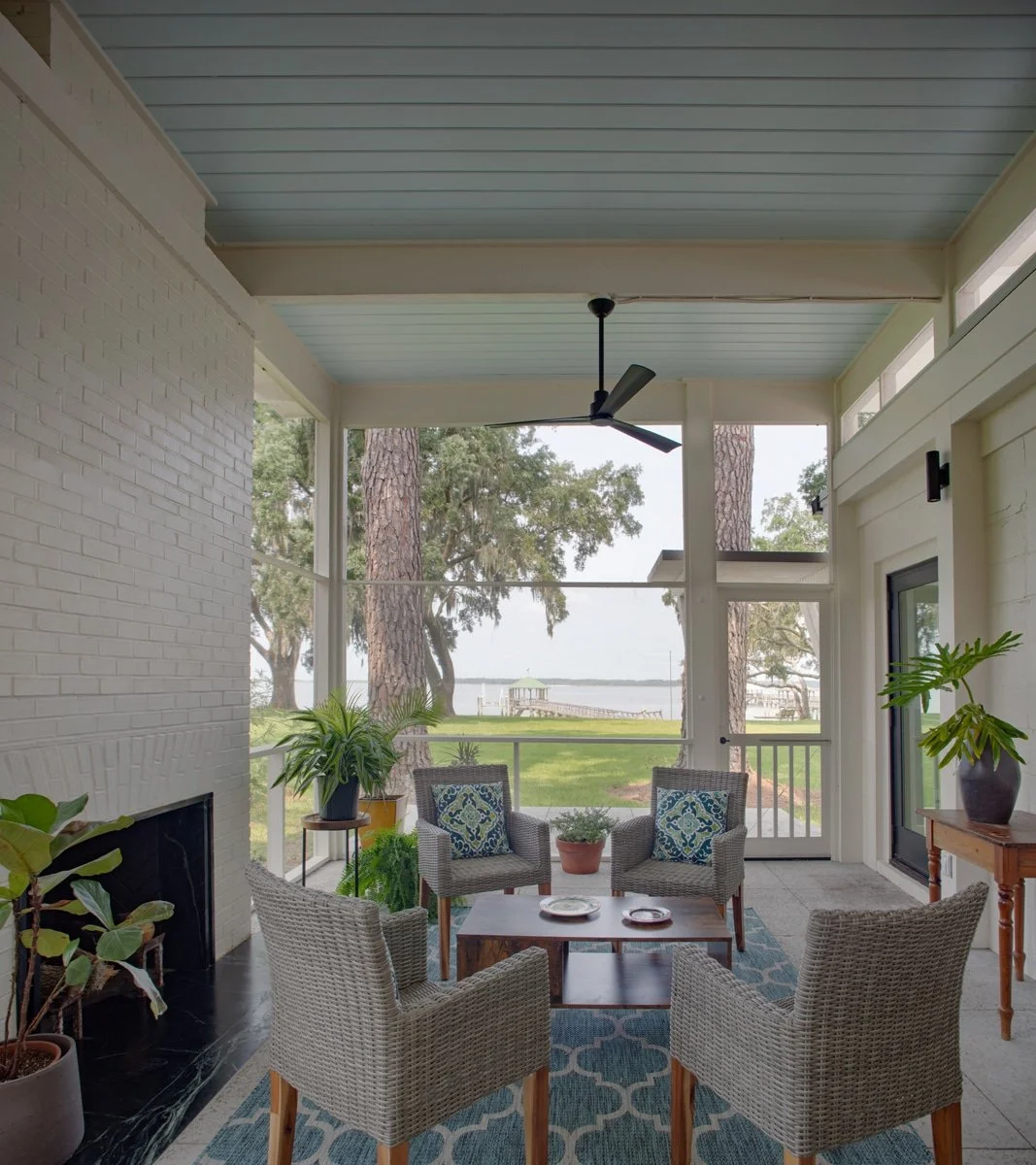Porches
Every evening, Michael and I enjoy sitting out on the porch, while watching the sunset and listening to the tree frogs serenade us. We are reaching peak porch season as the days get longer in the spring. There are many factors to consider to create the best experience for outdoor living.
The best location for a porch is the south façade. This protects the interior from the hot summer sun and provides a cozy spot for winter days. Likewise, do not put porches on the north, unless it is a small covered entrance for a door. Large porches on the north side of the house tend to be dark, dank and uninviting.
Most porches need to accommodate both an eating area and a comfy sitting area. Ten feet deep is a good starting point for the porch. Fourteen to sixteen feet is more gracious. Allow for at least three feet around all sides of a dining table to give maneuvering room for chairs.
Unless you are ocean front with a constant breeze, most people want to have a screened porch. Retractable screen are extremely popular because they can be rolled up when not in use and not block the view. Fenetex offers a dual insect and hurricane screen for the ultimate protection. Ceiling fans will help beat the heat and keep the bugs at bay. The ceiling fan should be U.L. rated for Wet Locations for safety and longevity of the fan.
Here in the lowcountry, many porches are raised to be out of the flood plain. If the house does not need raising, porches that are 30” or less from the adjacent grade, deck or terrace do not need a railing. This is ideal because the view remains open.
Adding an exterior fireplace to the porch to extends porch season to a year-round activity.
Finally, outfit the porch for leisurely visiting and entertaining with lowcountry favorites such as swinging day beds, joggling boards and Pawley island hammocks.



